Top 10 plants for butterflies

Known as the 'Butterfly Bush', buddlejas are an excellent addition to your garden if you want to attract pollinators
Image: Buddleja 'Lo & Behold - White Chip' from Thompson & Morgan
There's something quite magical about butterflies floating around in the garden. These whimsical insects are not only a beautiful sight, they’re important pollinators that often travel vast distances. A healthy butterfly population is also a great indicator of a healthy ecosystem as their caterpillars are an essential part of the food chain for birds and other insects.
If you want to attract more butterflies to your garden, browse our range of plants for pollinators and choose varieties that bloom from early spring to late autumn. And don’t forget to provide a small patch of nettles, thistles, ivy or docks where the butterflies can lay eggs and caterpillars can hatch.
Here are ten of the best plants to attract butterflies:
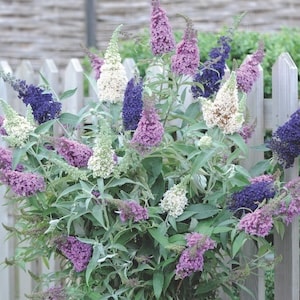
1. Buddleja
Buddleja is a compact upright shrub that is easily accommodated in borders without overcrowding its neighbours. Flamboyant plumes of brightly coloured flowers create a vibrant summer display that lasts right through to autumn. The grey-green foliage is slender and elegant, turning to buttery yellow in autumn. These handsome butterfly bushes are always popular with pollinating insects and make a useful addition to wildlife gardens and cottage garden borders.
Example: Buddleja davidii Triple 3-in-1
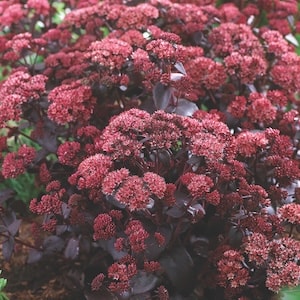
2. Sedum
Sedum is a magnet for butterflies in the garden and provides reliable, hardy colour. Sedums tend to form a clump, with drought-tolerant, fleshy foliage, and pink or yellow autumn blooms. These plants are most at home in hot, sunny borders, and require very little maintenance, so are ideal for beginners. Their autumn-flowering period is useful for extending the season of interest in the garden.
Example: Sedum telephium 'Purple Emperor'
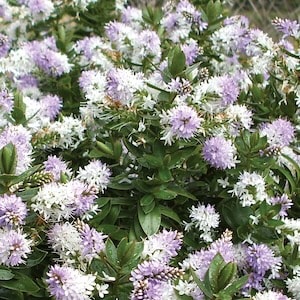
3. Hebe
Hebes offer impact and structure in the garden for minimum effort. Often slow growing and compact in nature, they’re also very easy to grow and incredibly resilient! The summer flower spikes range in colour from deep blue or purple through to pure white and are a magnet for bees and butterflies. Hebes perform well in large pots or out in the garden, proving hardy to whatever the British winter throws at them.
Example: Hebe 'High Voltage'
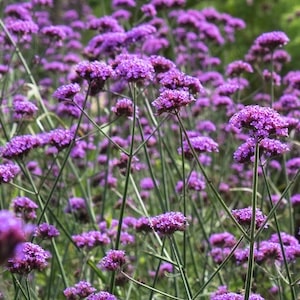
4. Verbena bonariensis
Verbena bonariensis produces tightly clustered florets of purple flower heads that float atop tall, upright, branching stems. The long-lasting blooms associate beautifully with grasses to create a tranquil planting scheme, or can be used to add architectural height to the back of herbaceous borders. This elegant perennial attracts clouds of bees and butterflies and is at its most effective when planted in large swathes.
Example: Verbena bonariensis
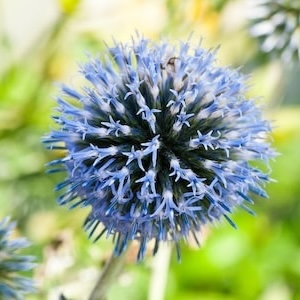
5. Echinops
Echinops are a well-loved perennial with a strong architectural impact. Spiky globes of electric blue flowers perch upon silvery green stems, which make superb cut flowers, whether fresh or dried. The late summer blooms rise above clumps of spiny, deeply cut foliage which forms an attractive contrast with other perennials. Globe Thistle works well in sunny cottage garden borders and hot gravel gardens. Pollinating insects love it too, so plant a few in your wildlife areas for the local butterflies.
Example: Echinops ritro
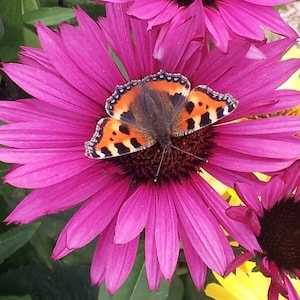
6. Echinacea
Echinacea is known for its stunning, large blooms and contrasting cones that stand proudly above strong stems. Once established, the bushy plants produce clusters of stems that attract bees and butterflies to your garden and add height to your borders. Each flower can reach 7-10cm in diameter and makes a dramatic addition to vases and dried arrangements.
Example: Echinacea purpurea
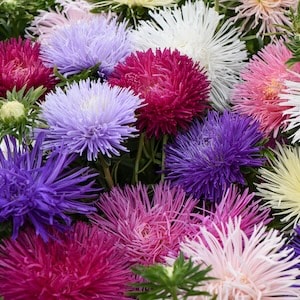
7. Aster
Aster is possibly one of the easiest plants to grow and is especially popular in cottage garden schemes. The perfect choice for late summer and autumn colour, these compact, hardy perennials burst forth in August with a smothering of beautiful violet/blue daisy-like flowers that continue to glow until the end of autumn. Once established in your beds or borders, these blooms provide a late source of nectar, year after year.
Example: Aster 'Starlight Mixed'
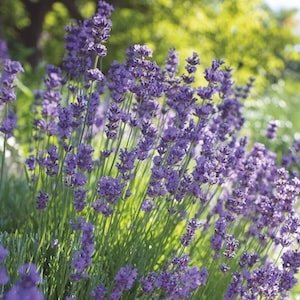
8. Lavender
Lavender is well known for producing masses of scented, purple flower spikes, but it also comes in pale pink and white. The fragrant stems are ideal for cutting or drying, and the nectar-rich flowers are particularly attractive to butterflies and bees. Lavender makes an excellent low hedge and when planted alongside a path, the aromatic perfume is released every time you brush against the evergreen foliage.
Example: Lavender 'Hidcote'
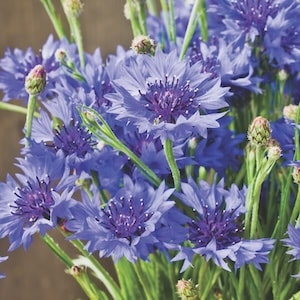
9. Cornflowers
Cornflowers produce densely ruffled flower heads ranging from white through to a beautiful deep blue. Once a common sight in cornfields, annual cornflowers still create a big impact in summer borders and meadows. Available in tall or dwarf varieties, these intensely coloured blooms make excellent cut flowers and provide a rich source of nectar for pollinators.
Example: Cornflower 'Blue Diadem' - Seeds
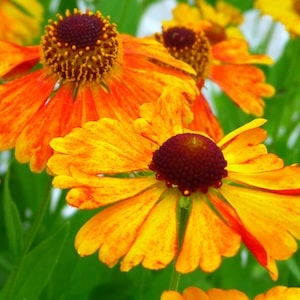
10. Helenium
Don't get caught out with a drab garden in late-summer - Helenium is an excellent way to extend the season well into October. This hardy perennial is loved by bees and butterflies, and many varieties hold an RHS Award of Garden Merit as proof of their reliability. Tall and bright, this pollinator-friendly bloom is a great way to fill gaps in your borders as other plants fade. Grow with grasses or as part of a cottage garden scheme.
Example: Helenium 'Moerheim Beauty'
Now you know how to attract butterflies, it's time to turn your attention to other beneficial insects. Find lots more helpful information and advice about plants for pollinators over at our hub page.
See all Top 10 articles
Popular Top 10 Articles
- Top 10 Winter Vegetables
- Top 10 Potato Varieties
- Top 10 Easy-to-grow Fruit
- Top 10 Winter Bedding Plants
- Top 10 Summer Bedding Plants
- Top 10 Spring Flowering Bulbs
- Top 10 Summer Flowering Bulbs
- Top 10 Autumn/ Winter Flowering Bulbs
- Top 10 Evergreen Shrubs
- Top 10 Evergreen Shrubs for Small Gardens
- Top 10 Easy-to-grow Flowers
- Top 10 Cut Flowers
- Top 10 Hanging Basket Plants
- Top 10 Plants for Patios
- Top 10 Houseplants
- Top 10 Climbing Plants
- Top 10 Perennial Plants
- Top 10 Hardy Plants for Winter
- Top 10 Winter Garden Tips
- Top 10 Ornamental Grasses

Written by: Graham Ward
I've been gardening for as long as I can remember, my earliest memory being planting seeds in my Grandfather's prestige flower bed and having a prize lettuce growing there, which he proudly left to show everyone. Since then, gaining knowledge and experience from both my Grandfather and my Father, I've continued to garden, both as a hobby and later on as a professional gardener and landscaper for 12 years. I love all aspects of it, from the design and build, to the planting out of summer borders with plants you've either grown from seed or raised from plugs. Unusual varieties always catch my eye and I'm keen to try growing them, even if sometimes it means learning from my mistakes.Sign Up For Exclusive Special Offers




© 2025 Thompson & Morgan. All rights reserved. A division of Branded Garden Products Limited.



